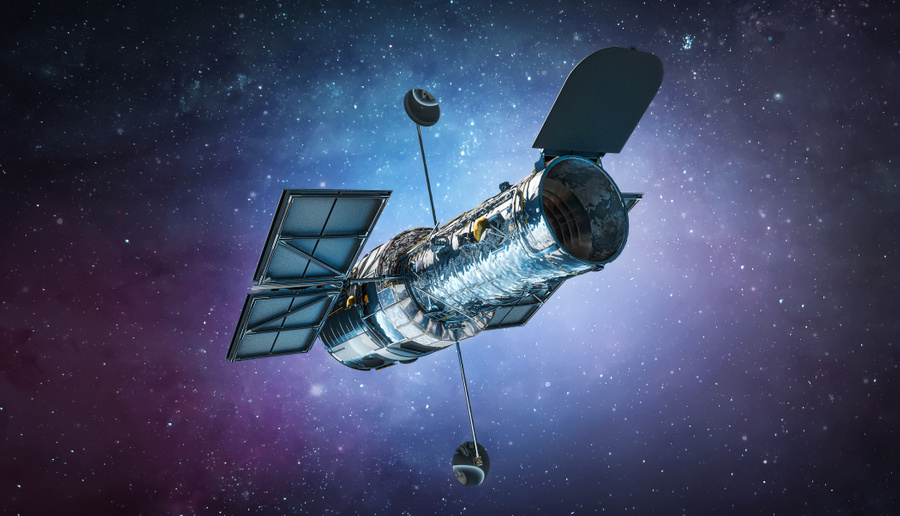Now researchers are arguing over whether it’s a unique discovery or a faulty piece of equipment.
On November, 28th in the Center of space flights NASA of a name Goddard has informed that the telescope “Hubble” has photographed star cluster Pismis 26. It is removed from Earth to 23 thousand light-years and is located in the constellation of Scorpius. It is noted that Pismis 26 is located near the core of the Milky Way and lies within the space dust filled bulge.
It is essentially a globular cluster, that is, a group of stars clustered together due to mutual attraction. The greatest concentration of stars in such clusters gravitates towards the centre of the structure.

A total of about 180 globular clusters have been detected in the Milky Way, if you count them together with the candidates. The structure of the clusters often includes early stars that are the same age as the Galaxy. However, the origin and role of these objects in galactic evolution is still unclear. These are now objects of particular interest to scientists.
In the case of the Pismis 26 cluster, scientists used Hubble to study visible and infrared light. And the latter has provided most of the information.
The Pismis 26 cluster is near the centre of our galaxy, close to the stars surrounding the black hole. Because Pismis 26 is in a place of increased dust accumulation, it provokes peculiar optical refractions. The dust scatters blue light from the short wavelength but allows red light from the longer wavelength to pass through. From the optical and infrared spectra it is possible to determine the degree of reddening, to calculate the age of the cluster and also to determine the metallicity of the cluster.
Metallicity is the degree to which stars contain elements heavier than hydrogen and helium. Nitrogen, for example. Such clusters usually consist of Generation II stars, where the metallicity is minimal. But Pismis 26, judging by its high metallicity, is composed of Generation I stars.
Typically, these metals were spread throughout the universe by supernova explosions. But, given the fluidity of stellar classifications, things are not so simple here. In addition to Generation I stars, there are also Generation II and even Generation III stars in the Pismis 26 cluster. So it’s a star ark of sorts. Scientists are now interested in studying the evolution of the Pismis 26 cluster in more detail. Due to gravitational effects, it has clearly lost much of its mass, including the outer layers.
The Pismis 26 cluster has a known age. It is 12 billion years old. The Milky Way is about 14 billion years old, so Pismis 26 is one of the oldest objects in the galaxy. The question is whether all of the stars in the Pismis 26 cluster were formed inside the Milky Way or were also brought there by neighbouring satellite galaxies. In many ways, the Pismis 26 cluster resembles the Omega Centauri of the Milky Way and Mayall II in the Andromeda galaxy.
That said, many questions remain. While Generation II clusters were previously the nuclei of dwarf galaxies swallowed up by giant galaxies, Pismis 26 was born inside the Milky Way. But the presence of other generations of stars within the cluster might indicate that dwarf galaxies also took part in its formation. But it’s still a hypothesis.
What is it? An anomaly or a paradox not yet solved by astronomers caused by the lack of data? We can say that with the Hubble telescope, scientists have not just got a “beautiful starry placer” (thousands of bright stars on a black background and thousands of red and blue stars at the edges), the picture of which can decorate the desktop on the computer, but also some kind of problem that must be solved.
What tasks do scientists have to do in this context? Pismis 26 stars need to be studied in detail, the chemical composition of the stars, the exact age of each star, and using the tools available, the stage at which the cluster lost most of its mass.
There is a point of clarity to be made here. Scientists have long struggled with the Omega Centauri cluster. At first it was considered a star, then a nebula, and later a star cluster. At the same time it was noted that Omega Centauri was once a galaxy. And so far this question has not been put to rest. After all, there is already a perception that globular clusters and dwarf galaxies are hard to distinguish objects of the same order. In fact, there may be a confusion of terms caused by Edwin Hubble’s classification, and because of it a confusion of conclusions.
And to follow the analogy, the Pismis 26 cluster is very similar to the Omega Centauri cluster in its boundaries. Yes, it is much smaller, but it is identical in many properties, including the variety of generations of stars, as well as the high metallicity. And once upon a time, the Omega Centauri cluster was also considered an exception to the rule. And now Pismis 26 could be. Accordingly, scientists have many hypotheses, but each requires further investigation.
What promise does this hold for science? This will at least allow a more detailed study of the Milky Way’s early evolution, the extent of interaction with neighbouring galaxies, and clarify previously undiscovered features of the star cluster formation process.
336 total views, 2 views today



